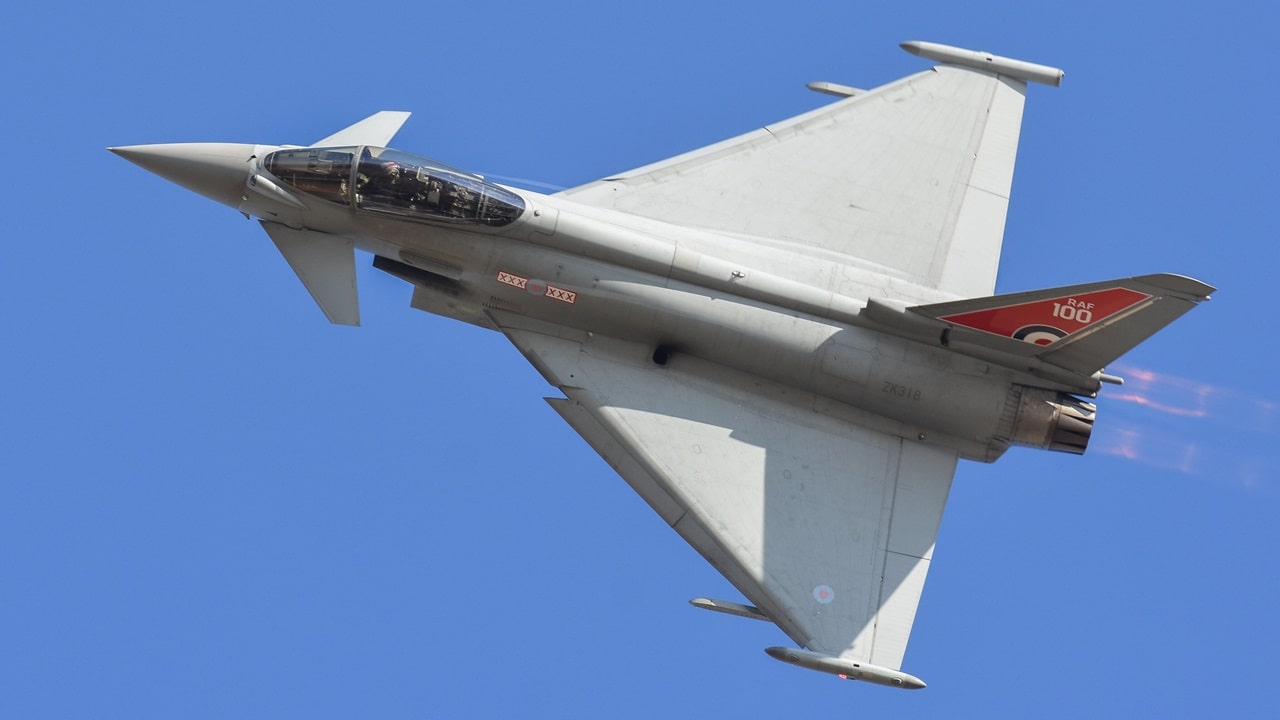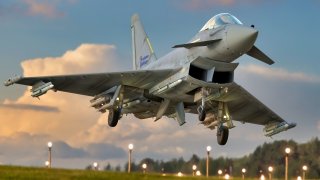German Eurofighter Typhoons Just Landed on Russia's Doorstep
German Eurofighter Typhoons conducted their first highway landing operation in Finland as part of the BAANA 2024 exercise, following a similar U.S. Air Force F-35 operation.
Summary and 5 Key Points You Need to Know: German Eurofighter Typhoons conducted their first highway landing operation in Finland as part of the BAANA 2024 exercise, following a similar U.S. Air Force F-35 operation.
-The German fighters landed, refueled, and took off on a country road near Hosio, just 180 km from the Russian border.
-This exercise, closely monitored by Russia, demonstrated the Eurofighter’s ability to operate from austere environments, enhancing NATO’s readiness.
-Finland and Sweden have trained in such operations to keep their air capabilities intact, even if airfields are destroyed.
-The Typhoon, serving across multiple European air forces, combines lightweight composite materials and advanced engines for superior maneuverability and some limited stealth.
German Eurofighter Typhoons Land on Finnish Highway Near Russian Border
Just days after U.S. Air Force F-35 Lightning II fighters landed on a highway in Finland during the BAANA 2024 exercise, three German Eurofighter Typhoons also conducted a similar operation in the Nordic country for the first time. The fighters – from the 71st Tactical Air Wing – landed, refueled, and took off from a "country road near the Finnish village of Hosio, 180 kilometers from the Russian border," the German-based BILD reported on Sunday.
"Starting on Wednesday, several landing approaches with a short touchdown were practiced on the country road near Hosio before the planes came to a stop on the runway, taxied to the end and were refueled there with the engines running. After refueling, they took off again and returned to Rovaniemi Air Force Base," a German Luftwaffe (Air Force) spokesman told BILD.
The German-language news outlet also reported that given the distance from Russia, it was likely that the Kremlin's radar stations closely monitored the exercise involving the NATO militaries. Images of the German Eurofighter Typhoons landing on the country road have been shared across social media.
As reported by Bulgarian Military, the ability to operate from an austere landing strip would put the "European fighters in the same league as the F-35, Gripen, and F/A-18, which have previously proven such abilities," and added, "by enabling Eurofighters to land on regular roads, the German Air Force can scatter its aircraft across multiple locations, making them more challenging to detect and destroy."
Finland and neighboring Sweden, which officially joined NATO earlier this year, have long trained in roadway landings for just such reasons. Even if their airfields are destroyed, the fighter aircraft can operate from remote locations across the respective countries. In addition, it can reduce the travel time and distance from bases – allowing the fighters to strike targets deeper in an adversaries' territory (in this case Russia).
As with similar operations, it requires more than just landing a fighter on any clear section of road. Advanced preparation included the deployment of ground personnel from Germany.
"The entire relocation of 30 Bundeswehr soldiers and a total of five aircraft (three Eurofighters from Laage near Rostock and two A-400Ms from Wunstorf near Hanover) to Finland took less than twelve hours," BILD noted.

The Eurofighter Typhoon is now in service with the UK's Royal Air Force, the German Luftwaffe, the Italian Air Force, and the Spanish Air & Space Force. As of last November, a total of 592 of the advanced aircraft have been produced.
The twin-engine Typhoon features a canard-delta wing and an airframe that is constructed mostly from composite materials that are 30 percent lighter than more traditional aircraft materials. Just 15 percent of its surface is metal, making it difficult – albeit not impossible – to detect by radar.
The Eurofighter is powered by twin Eurojet EJ200 engines, which each utilize a single-stage turbine driving a three-stage fan and five-stage compressor with annular combustion with vaporizing burners, can provide 90 kN of thrust – with a maximum speed of Mach 1.8 The engines can log up to 1,200 flying hours before requiring unscheduled maintenance. It enabled cruise at supersonic speeds without afterburning. The Typhoon also employed a deliberately unstable aerodynamic configuration that provided superior maneuverability at subsonic speeds as well as efficient supersonic capability.
It is armed with an internal 27mm Mauser cannon and can carry a variety of ordnance including ASRAAM and AIM-120 AMRAAM air-to-air missiles, as well as Storm Shadow and Brimstone air-to-ground missiles.
Author Experience and Expertise: Peter Suciu
Peter Suciu is a Michigan-based writer. He has contributed to more than four dozen magazines, newspapers, and websites with over 3,200 published pieces over a twenty-year career in journalism. He regularly writes about military hardware, firearms history, cybersecurity, politics, and international affairs. Peter is also a Contributing Writer for Forbes and Clearance Jobs. You can follow him on Twitter: @PeterSuciu. You can email the author: [email protected].
Image Credit: Creative Commons and/or Shutterstock.


